|
|
| |
| 1928 Bentley 4½ Litre |
|
|
Original 1928 Numbers
Chassis No. KM3088
Engine No. MF3175
Registration No. YW 2557
|
|
This car - updated
Chassis No. KM3088
Engine No. MF3175
Registration No. YW 2557
(Updated with information from Gooding & Company. - July 2012) |
|
| |
|
|
 |
| 2017 |
 |
| Click
on thumbnail for larger view |
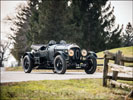 |
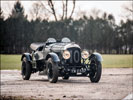 |
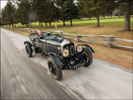 |
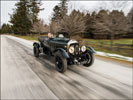 |
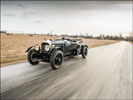 |
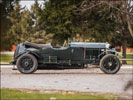 |
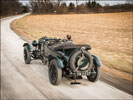 |
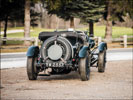 |
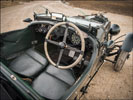 |
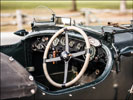 |
 |
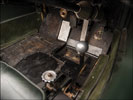 |
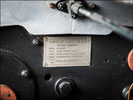 |
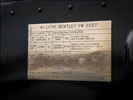 |
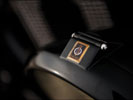 |
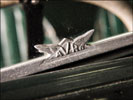 |
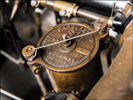 |
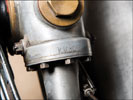 |
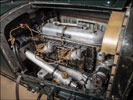 |
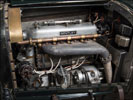 |
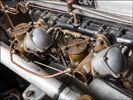 |
|
| |
 |
| |
RM Sotheby's Offers 1928 Bentley 4½-Liter At Amelia Island Auction, Estimate $6.5 to $7.5 Million
Only a handful of the original racing cars are more desirable than this 4½ liter "Bobtail," chassis no. KM3088. Though the car suffered a retirement at the 1928 Le Mans 24 Hours, in June of 1929 it came home third in the French classic. A month before that Le Mans success it took second place honors in the Brooklands Double Twelve, clocking an average 81.39 mph. It then served as a team practice car into 1930. The car has had precious few owners in nearly nine decades of existence, and its health and condition have been carefully attended, with a restoration in 1964 followed by a “preservative” restoration in 2009.
Originally purchased by Sir Roland Gunter to serve as a factory team race car, in 1930 KM3088 ownership passed to Lauchlan Rose, who reportedly drove the car to work on occasion. For after-lunch entertainment Rose supposedly lapped the Brooklands circuit. Rose sold off the car after a few years. By the time of World War Two, the much-loved car reportedly had almost 100,000 miles logged. Rose bought it back after the war, and passed it to his son. KM3088 remained with the Rose family through 1971. The Bobtail then formed part of Bill Lake’s pre-war sports car collection for 33 years, and only sold after he passed.
In recent years, KM3088 has been the recipient of a professional “preservation” restoration by marque specialists, meaning they only performed the work needed without completely remanufacturing the car to perfection—it has patina, as a Bentley should. It sold at Pebble Beach in 2012 for $6,050,000.
I contacted an old friend, in this case one who drove and reviewed the Birkin Bentley "monoposto" on the Isle of Man and later a Speed Six for me in the old days when we were roaming about sampling fine vintage cars and the best sports cars of the day. Last week he wrote the following in an email about driving a WO-era Bentley:
"Moving the steering wheel at idle is almost as difficult as lifting the car itself might be. Miraculously, at less than walking pace it sparks into life and is merely heavy. But it does come to life. Through the cord-wrapped rim proportioned to serve a Neanderthal man, every slight contour of the road is fed through the tires and up along the column. As speeds rise one's palms begin to tingle. Critically, at 60 to 70 mph on country roads the leviathan can be guided easily and accurately with one’s finger tips. It's truly uncanny that such mass can be directed with so little effort. WO Bentley’s cars have precision of controls that is quite remarkable."
“Alas the transmission remains awkward and was the Achilles heel of all WO-era Bentleys. True, it's precise, yet also heavy and recalcitrant. It can neither be bullied nor seduced. Timing is key. It cannot be rushed. If you've ever witnessed the Queen's Guard on parade, you will have noticed all their drill movements follow strict timing: ONE - pause, two, three, ONE. Well, that's what it takes to shift Bentley gearboxes.
“Shout exactly that at the top of your voice as you shift: 'ONE' (hit the clutch and knock the lever into neutral), 'pause, two, three' (wait until the gear speeds synchronize), and 'ONE' (nudge the lever into the next gear). On a good day it works like a Swiss watch.
“Even long-term owners admit that on some days there's nothing doing, and some how for some reason, the gears only grind. And when they do, you can feel the cogs grate and snatch—painfully—through the weighty lever at the heel of your palm (right-hand palm for all you Colonials because even though it's a right-hand drive car, the lever is situated outside the bodywork). It hurts. Unless you lay bricks for a living, your hand will turn purple.
"In all the many cars that I have piloted—you don't merely drive a vintage Bentley—nothing compares to the reward. Sitting high, as you would commanding a tank, you get a different perspective on the world, rather as you might wielding broadsword on a battlefield. Both are beautifully weighted and perfectly balanced. Forget your schiavonas and espadas—the Bentley is the perfect weapon for any gentleman."
==
Found on RM Sotheby's website on June 27, 2018
Lot Number: 266
RM | Sotheby's - AMELIA ISLAND 2017
1928 Bentley 4½-Litre Le Mans Sports "The Bobtail" by Vanden Plas
Chassis No. KM3088 ~
Engine No. MF8175
$6,500,000 - $7,500,000
- “The Bobtail,” one of the most significant and correct Works Bentleys extant
- Built for the 1928 Bentley Works season
- Two-time factory Le Mans entrant, including podium finish in 1929
- 2nd place at the 1929 JCC Double Twelve
- Driven by such famous “Bentley Boys” as Sammy Davis, Frank Clement, and Dudley Benjafield
- Includes detailed historical account by noted marque historian, Dr. Clare Hay
BENTLEY BESTS LE MANS
Coming to the realization that his 3-Litre car was just not fast enough for international competition, W.O. Bentley set about producing a larger-engined vehicle that could be easily modified to compete in the most important international race of the era: the 24 Hours of Le Mans.
Only slightly modifying the chassis of the 3-Litre, the real emphasis was put into the engine. The bore was increased to 100 millimeters, and the stroke reduced to 140 millimeters, creating a cubic capacity of 4,398-cubic centimeters, a nearly 1,500-cubic centimeter increase from the previous model. Twin SU “sloper” carburetors were added, with ignition controlled by two ML GR4 magnetos.
After an excruciating victory at the 1927 Le Mans, Bentley prepared for the 1928 season with renewed energy. Three cars were prepared in secrecy in a new Racing Shop close to the Vanden Plas’ Works, the second of those being chassis KM3088, fitted with engine MF3175. After being built by the Chassis Shop, KM3088 was sent on to the Racing Shop to be outfitted with the special racing modifications and newly designed body. These modifications included non-self-wrapping front brakes, additional shock absorbers, and the new single-plate clutch. The engines were tuned to enable speedy pit stops, with a reserve oil tank controlled by a driver-operated tap on the nearside of the car allowing for the required 20 laps between fluid replenishments.
The body was built by Vanden Plas, a firm with roots in the aircraft industry, with long experience building coachwork for racing Bentleys. The surviving build record gives little information, instead noting the specification as “job 1477,” referring to KM3088’s sister car, KM3077. The new design was created specifically to meet with the strict regulations of the Le Mans race; a four-seater with a short and rounded back, a near-vertical spare wheel, and the “bobtail” cowling, which gives the model its nickname. The windscreen was wire-mesh, and an extra “Cyclops” Marchal headlamp was fitted to give better vision during the long hours of night driving. Finished in green fabric with matching Parson’s Napier Green paintwork and upholstery, the Vanden Plas record shows that the body was completed on 25 May 1928, allowing Bentley plenty of time for testing before Le Mans.
RACING WITH THE BENTLEY BOYS
Entered in a team of three 4½-Litres for the 1928 Le Mans, KM3088 was allocated race #2 and driven by well-known Bentley drivers Frank Clement and Dr. J. Dudley “Benjy” Benjafield. The race was off to an astounding start for Bentley, as The Motor notes “Clement, on his very first lap, had beaten all existing records for the course . . . averaging 72.7 mph from a standing start!” Several hours in, #2 led the race, with a second Bentley not far behind.
Disaster would strike for the Bobtail as dawn approached – a loose water pipe emptied the radiator, resulting in extreme overheating. The culprit was a cracked chassis frame, causing the vehicle to sit unevenly and misalign. Clement could do nothing more than drive the car into the dead-car park, and hope that the other two Bentleys held on for the remaining hours. In the end, an overheating “Old Mother Gun” limped to a 1st place finish.
Post-Le Mans, KM3088 was repaired by Bentley Motors, though it is uncertain whether an entirely new chassis frame was fitted. After a run at the 1928 Shelsley Walsh, coming in 3rd, the 4½-Litre was advertised in The Motor on 21 August, and sold to “Bentley Boy” Sir Ronald Gunter, who maintained KM3088 at the Racing Shop until February 1930.
The 1929 season saw KM3088’s finest moment with its inclusion as a Works entry in the brand-new JCC Double Twelve. Driven by Sammy Davis and Gunter as #6, the Bobtail was firmly in 2nd place by the third hour, battling against the Alfa Romeos. With the early retirement of the Works Six Speed, it was up to Davis and Gunter to bring home the win for Bentley. As the second day dawned, all eyes were locked on the fight between KM3088 and the Alfa 6C 1500 driven by Giulio Ramponi. Pushing the car to its limit, Davis drove at a staggering 90 mph just behind the leading Alfa, slipping around the turns on the wet track. Despite giving it his all, Davis finished just behind the Alfa; handicap records show a margin of just 0.003.
The hard battle of the Double Twelve showed itself later that season, when KM3088 was entered last minute in the 1929 Le Mans, driven by Benjafield and Baron André d’Erlanger, now dressed as #10. During the race, problems arose with the battery, water pump, and lights. Indeed the front brakes were so worn that the mechanics were forced to disconnect them entirely – a decision which led to Benjafield not returning the vehicle to d’Erlanger for the final push. In the end, however, Bentley crossed the line with a historic 1-2-3-4 finish, with KM3088 finishing 3rd amongst the pack, despite its mechanical problems. For the third year running, Bentley proved its status as the best motor vehicle manufacturer in the world, and the Bobtail was a major player in the feat.
THE BOBTAIL
After its second grueling outing at Le Mans, KM3088 was sent to Kensington Moir’s showroom, and sold in the first half of 1930 to Lauchlan Rose. Rose wrote two articles for the Bentley Drivers Club Review detailing his early ownership, which included the fitting of the new “D”-type gearbox in September 1930, along with his change to a glass windscreen. At the end of 1933, Rose passed the 4½-Litre to then-RAF Ground Instructor Lewis Rivers Oldmeadow, a decision Rose regretted immediately. Oldmeadow maintained the Bentley as it was, except for the fitting of a new steering wheel. As he reports in a September 1944 Motor Sport article, the war caused him to sell in 1939, and KM3088 fell out of sight. The last maintenance reported on the Service Report is a new throttle cable, fitted January 1939.
In a miraculous twist of fate, KM3088 was discovered after the war by none other than Lauchlan Rose. He records his first sighting of his beloved car in a September 1949 article in the BDC Review, noting the poor state of his once pristine motor car. “The car nearly brought tears to our eyes. It was evident that she had spent much of the war in some damp place, as mildew and rust could be seen in various corners.”
Dr. Clare Hay, in her initial report of KM3088, queries as to whether it was during this time when the engine was tampered with—producing the odd stamping now seen. Though thought to be original for many decades, the crankcase was discovered to be stamped with MF8175, not the original MF3175, upon the removal of an earth strap during the later restoration. Hay does note that the cylinder block looks to be the original racing block, complete with the RAC scrutineering stamp.
Rose set about rescuing KM3088 and commissioned a restoration by Bill Shortt, with further work by Tony Townshend’s Elmdown Engineering returning the Bobtail to its original Le Mans glory. The Bentley remained with the Rose family for another 25 years, until passing to noted pre-war collector Bill Lake. KM3088 was in good company, as Lake also owned GF 8507, the Six Speed team car. Upon his passing in 2004, Lake’s son sold the Bobtail. The new owner undertook a preservative restoration by VBE Restoration to return the historic specification of the Bentley. Invoices for this work are maintained in the history file and show the incredible amount of detail and time that was committed to this project.
The Bobtail was acquired by the current owner in 2012 and has been beautifully maintained, having been recently described as “like going back in time.” It shows the proper patina of its age and significance, as neither restoration detracted from its original beauty.
As one of precious few Bentley Le Mans Works Team cars, and one of even fewer with such a prestigious race record, KM3088 would certainly be the prized possession of any important collection the world over. The chance to buy such a car does not present itself often and certainly should not be taken lightly. It is, quite simply, one of the most authentic and storied Works Bentleys in existence – known and beloved to enthusiasts worldwide as “The Bobtail.” |
|
| |
|
|
| |
|
|
| |
Source:
Forbes (by Mark Ewing, January 2017) and RM Sotheby's
Posted: Jul 03, 2018 |
|
| |
|
|
|
|
 |
|
 |
 |
| July
2012 |
| Click
on thumbnail for larger view |
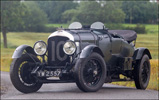 |
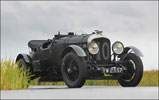 |
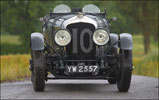 |
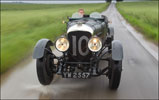 |
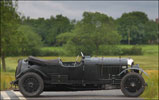 |
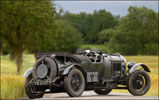 |
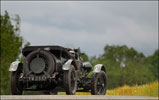 |
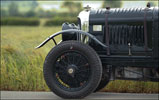 |
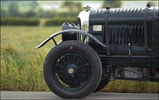 |
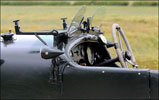 |
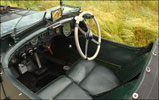 |
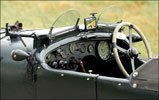 |
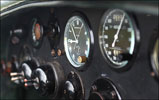 |
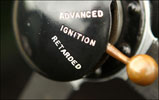 |
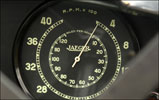 |
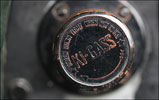 |
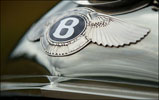 |
 |
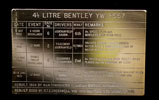 |
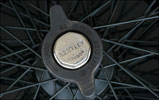 |
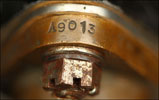 |
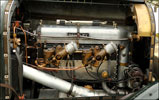 |
|
|
|
| |
 |
| |
Aug
30, 2012: Sold at auction for $6,050,000.
Factory Le Mans Team Car
1928 Bentley 4½ Litre Le Mans Sports
"Bobtail"
Coachwork by Vanden Plas
CHASSIS NO. KM3088; ENGINE NO. MF3175
(see text); Registration No. YW 2557
$5,500,000 - $7,500,000
- A Two-Time Factory Le Mans Entry
- 2nd Overall at the 1929 Brooklands
Double Twelve
- 3rd Overall at the 1929 24 Hours
of Le Mans
- The Only Remaining “Bobtail”
4½ Litre
- Exceptional Provenance and Limited
Ownership
- Recent and Exacting Preservative
Restoration
- Ideal International Driving and
Concours Event Entrant
- One of the Greatest Bentleys in
Existence
- 4,398 CC SOHC Inline 4-Cylinder
Engine
- Twin SU Sloper Carburetors
- Estimated 150 HP
- 4-Speed Manual “D” Gearbox
- 4-Wheel Mechanical Drum Brakes
- Semi-Elliptical Leaf-Spring Suspension
- with Friction-Plate Shock Absorbers
In 1928 Chassis KM3088 was fitted
with engine MF3175 in preparation
for the fast approaching racing season,
and received registration YW 2557.
The 4½ Litre “Bobtail,”
commonly referred to by its registration
number YW 2557, was completed by Vanden
Plas in June 1928 with body no. 1480
and was invoiced to Sir Ronald Gunter.
The work conducted by Vanden Plas
was carried out in the strictest confidence,
handled directly by W.O. himself.
The first two cars produced, YV 7263
and YW 2557, were works specialized
production chassis sent to Vanden
Plas for lightweight Le Mans coachwork
per design 1477. The body consisted
of an ash frame with fabric covering.
A tall, rear D-shape fuel tank was
mounted with a vertical spare. The
package was covered by a rounded aluminum
shroud, the resultant appearance of
which gained the cars their “Bobtail”
nickname. Additionally, the team cars
received the “eyebrow”-type
cycle fenders. Both cars were finished
in the team’s standard Napier
Green.
Further specification included quick-release
caps for water, fuel and oil replenishment,
a leather hood strap, a fold-flat
front screen, Aeroscreens, large-diameter
gauges, bucket-style seats and cycle
fenders. The differences between the
works cars and the production cars
amounted to innumerable modifications,
either for weight savings, reliability
or performance. Specifically for the
1928 Le Mans, the team cars sported
a third, centrally mounted headlamp.
With the fast new four cylinders at
their disposal, the team entered the
1928 24 Hours of Le Mans. For YW 2557,
W.O. selected two of his best drivers
– the 1924 Le Mans winner Frank
Clement and the 1927 Le Mans winner
Dudley Benjafield. The race proved
a significant trial for the new 4½
Litre “Bobtail,” with strong
competition from Stutz and Chrysler.
Almost immediately, YW 2557 was setting
a blistering pace, recording a new
lap record at 72.7 mph. The first
pit stop was made after three hours,
and by the time darkness fell upon
the Circuit de la Sarthe, YW 2557
was running in 4th in the hands of
Clement and Benjafield.
Unfortunately, well into the race,
YW 2557 suffered a broken frame. The
quick pace in combination with a significant
ridge just near Maison Blanche caused
the fracture and a broken radiator
hose resulted some laps later. Per
regulation, water could only be replenished
every 20 laps, and YW 2557 was forced
to retire on the 71st lap. Old Mother
Gun similarly broke its frame shy
of the finish, but limped to victory,
driven by Barnato. Birkin managed
to bring the no. 3 car into 5th overall.
On the return trip from Le Mans the
third 4½ Litre broke its frame.
The race was a success, but Bentley
knew there was room for improvement.
Upon return to Cricklewood, each of
the team cars received new frames
with significant chassis strengthening.
Of note is the modification of Birkin’s
“Bobtail” to be fitted with
a different style of fuel tank, a
small trunk and a side-mounted spare,
making YW 2557 the sole remaining
“Bobtail.” The 4½-litre
cars were continually campaigned throughout
the remainder of the 1928 season.
For the first major outing in the
1929 season, Bentley once again turned
to YW 2557 for the inaugural Double
Twelve Race at Brooklands on May 10th
and 11th. The 1927 Le Mans winner,
Sammy Davis, and Gunter were given
YW 2557, wearing no. 6, and were joined
by Clement and Cook in YV 7263 and
Barnato and Benjafield in the new
Speed Six.
On the first day of the race, Bentley
lost the Speed Six entry to retirement,
although the car had been leading,
averaging well in excess of 92 mph.
On the second day, Bentley retired
the Clement and Cook 4½ Litre,
leaving only YW 2557 to battle with
the remaining Alfa Romeos. YW 2557
proved quite capable, with Davis noting
comfort at speeds of 104 and 105 mph,
even reaching 107 mph when needed.
Davis went on to recount that it was
“the finest battle [he had] ever
had bar none. Worthily did No. 6 respond.”
In a very close finish, Alfa Romeo
took the victory, having been given
a substantial handicap advantage.
The 4½ Litre “Bobtail”
took an admirable 2nd.
Just four weeks after the endurance-racing
season opener, Bentley was headed
to Le Mans. After the necessary fettling
and preparation, a fivecar team was
assembled with a singular Speed Six,
Old Mother Gun, and the three other
4½-litre team cars, including
the “Bobtail” YW 2557. Interestingly,
three of the five cars had just been
used in 24-hour events; in fact, the
Birkin 41/2 Litre had run two 24-hour
events leading up to Le Mans. Birkin
had pulled the two supercharged entries
at the last moment, and YV 7263 and
YW 2557 were entered with little to
no preparation.
Regardless, the 1929 Le Mans race
proved Bentley’s dominance. Of
the five entries, only YV 7263 failed
to finish. By the closing hours of
the race, W.O. had ordered the team
into a slow pace. At one point, Dunfee
had pulled off Old Mother Gun to have
a drink! When the checkered flag dropped,
it was Bentley in positions 1, 2,
3 and 4. Benjafield and Baron d’Erlanger
piloted YW 2557 to an easy 3rd place
overall.
The 1929 season was a sensational
success, but it brought change. W.O.
soon favored the Speed Sixes, of which
he eventually had three for competition,
and Birkin favored his personal project,
the “Blower” Bentley.
YW 2557 remained with the team, well
used for fast practice at Brooklands
by Sammy Davis and Clive Gallop. The
4½ Litre “Bobtail”
was retained by Gunter until 1930
when the team car was sold to Lauchlan
Rose. Factory service records indicate
some minor refurbishment that year
at a noted 47,080 miles. Recounting
much of his ownership in the BDC Review
article “Fun and Games with YW
2557,” Mr. Rose proved to be
the owner the car deserved. “[It
was] the best motorcar deal I have
ever had in my life. Everything on
the car was just as she finished the
race, except that a compression plate
had been fitted. The front mudguards
were about a foot long, perched on
top of the wheels, so we decided to
have a somewhat longer pair fitted.
Otherwise everything was left exactly
as it was. Taking delivery of that
car has always been a great thrill
to me.”
Mr. Rose retained the car for three
years and during his ownership factory
service continued including the installation
of a new D gearbox, which he desired
in contrast to the straight-cut racing
type. A minor accident in June 1932
led to additional service work conducted
by Birkin and Couper, who replaced
the front axle bed and a handful of
other components. Mr. Rose frequently
used the “Bobtail,” driving
it quite often to work and taking
time after lunch to run several laps
at the Brooklands circuit. “We
would often go down on non-race days
and commit lappery and generally fool
about. Sometimes we’d do five
laps or more, and perhaps a few people
would gather to watch and wonder who
the poor sap might be who obviously
determined to break up his motorcar.
But the old car reveled in it, and
the longer we kept on the better she
seemed to go.”
In 1933, Mr. Rose sold YW 2557 to
his dear friend Rivers Oldmeadow,
a decision that would haunt him for
years to come, although Mr. Oldmeadow
proved to be a fantastic steward of
YW 2557. In the September 1944 Motor
Sport, Oldmeadow recounts “Cars
I Have Owned,” stating, “The
heyday of my motoring career was reached
when I bought KM3088 [the “Bobtail”],
a genuine 4½ Litre Le Mans
team Bentley. I never want any other
car; alas, the war and finance forced
me to sell her. This car carried me
for some years all over Great Britain,
Ireland, France, Belgium, Germany
and Austria and was, to my way of
thinking, perfect. I covered 84 miles
in an hour on the Wurzburg-Munich
autobahn, and that was taking things
quite gently.”
YW 2557 was well used and by 1939,
service records indicated that the
car had turned 100,000 miles and started
anew with an entry at 1,300 miles.
The only serious notation on record
is a change of the steering wheel.
In late 1939 or 1940, Mr. Oldmeadow
parted ways with the team car and
it passed into an unknown ownership
during the war, as is the case with
many Vintage Bentleys.
It is during the war years that we
believe YW 2557 suffered a rather
serious engine blow-up, at which time
the sump and crankcase were replaced
with standard 4½-litre bits.
Thankfully, the original engine block
was retained. The engine block in
fact carries the RAC scrutineer’s
stamp found only on the original four-cylinder
team car engines.
Shortly after the war Mr. Rose, who
still regretted selling YW 2557, found
the “Bobtail” for sale in
Autocar and purchased it once
again from the owner. Mr. Rose would
not make the same mistake again, and
the car remained in the Rose family,
eventually passing to Lauchlan’s
son Tom. Disappointed by its wartime
stewardship, Mr. Lauchlan Rose set
out to return YW 2557 to a more correct
state. In 1964, the car received a
restoration by Elmdown Engineering
Ltd to correct many details to team
car specification.
The Rose family’s roughly 25-year
stewardship lasted until 1971, at
which time YW 2557 was bought by noted
English collector Bill Lake. Mr. Lake,
who additionally owned GF 8507, the
“Number 2” Speed Six factory
team car, stabled the “Bobtail”
amongst his fantastic collection of
pre-war sports cars. It was not until
2004 that the 4½ Litre Le Mans
would leave its 33-year home. After
Mr. Lake’s passing, his son David
eventually chose to sell both cars.
In the hands of its current owner,
YW 2557 was entrusted to Bentley specialist
Richard Cresswell of VBE Restorations
for a complete preservative restoration.
During the restoration, certain key
components were obtained for the car,
including the factory racing sump
off of Le Mans winner Old Mother Gun
and a set of SU Slopers stamped “KM
spare,” the racing team’s
extra set of carburetors for YV 7263
or YW 2557.
Highlighting the success of the restoration
is the surviving patina of the car.
The 4½ Litre “Bobtail”
retains its period-correct fabric
covering. Bentley works-specific hardware,
components and modifications are found
throughout the entire car. For example,
mounting brackets for the 1928 Le
Mans third center headlamp remain
on the front cross member.
Further inspection of the coachwork
reveals the VDP number stamped in
the original body. This Bentley is
an absolute delight for those fascinated
by industrial archeology.
A silver plate affixed to the bonnet
recalls YW 2557’s phenomenal
racing record. Accompanying the Bentley
is a proper tool kit and handbook,
the original radiator, original bellypans,
and other bits from the most recent
restoration work. Also of note is
YW 2557’s presence in many highly
regarded Vintage Bentley publications
as well as numerous periodicals and
BDC Review. It has even graced the
cover of Hay’s Bentley Factory
Cars 1919–1931.
Those fortunate enough to have driven
a factory-works Bentley will note
that the visceral experience is unlike
any other pre-war sporting car. In
comparison to a standard production
chassis, the team cars have a momentous
energy and lightness about them. It
is widely known that a Vintage Bentley
is exceptionally powerful, but the
team cars further prove to be sensationally
fast.
Of the Le Mans Works Team Cars, originally
comprised of four 3 Litres, four 4½
Litres, three Speed Sixes and four
Birkin “Blowers,” few remain
in such a pure state. Inarguably some
of the most important motorcars on
the planet, the Bentley factory team
cars rarely come to market. The majority
of the surviving examples reside in
some of the world’s greatest
car collections. This 4½ Litre
“Bobtail” is one of just
two team cars to hold podium results
at the period’s two major endurance
races and, as one of the finest Bentleys
in existence, without question presents
an opportunity not to be missed. |
|
| |
|
|
| |
|
|
| |
Source:
Gooding & Company
Updated: Jul 30, 2012
Posted: Jul 09, 2012 |
|
| |
|
|
|
|
 |
|
|
 |
|
|
 |
|
|
 |
| Click
on thumbnail for larger view |
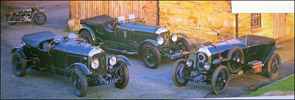 |
|
|
|
| |
 |
| |
|
|
| |
|
|
| |
|
|
| |
Source:
Passionnemans
Posted: Jan 19, 2009 |
|
| |
|
|
|
|
 |
 |
| 2006 |
| In
Wales in 2006 / Owned by a BDC member |
 |
|
 |
 |
| 2004 |
| Click
on thumbnail for larger view |
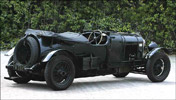 |
|
|
|
| |
 |
| |
Christies auction,
2004.
Registration No. YW 2557 (U.K.)
Chassis No. KM 3088
Engine No. MF 3175
Engine: four cylinder, overhead valve,
non-detachable cylinder head, 4,398cc,
110bhp at 3,500rpm; Gearbox: four
speed manual; Suspension: front and
rear, semi-elliptic leaf springs,
with friction shock absorbers; Brakes:
four wheel drum. Right hand drive.
Coachwork: 'Bobtail' tourer, by Vanden
Plas No. 1480, dark, British Racing,
green with green leather interior
History of this car
Chassis KM 3088 was built by the Works
between February and May 1928. Vanden
Plas records confirm the order of
a Le Mans Sports Racer body, as per
Job 1477 (Birkin's car, Chassis No.
KM 3077). By this they refer to the
all new lightweight bodywork designed
for Le Mans with cowled 25 gallon
'D' shaped tank sitting over the rear
axle for improved handling. Behind
the tank was an almost vertical rear-mounted
spare wheel, which would cause the
cars to be known as 'Bobtails'. Records
state it was to be finished in Parson's
Napier Green, with matching upholstery,
though further details, which would
have presumably been confidential,
are not detailed. The body was invoiced
at £215 to Bentley Motors, and
completed on 28th May 1928.
Bentley's Factory build sheet confirms
the original fitting of Engine No.
MF 3175 to this chassis and that the
car was sold to Sir Roland Gunter,
being registered YW 2557.
For many years, it was thought that
the racing debut of the car was in
the Essex Six Hours race at Brooklands,
a warm up race for Le Mans. Indeed
this is even noted on a plate on the
bonnet, but it is now known that the
car was not ready by then, and that
its first race was actually Le Mans
1928.
For the 1929 season at Brooklands,
the ambitious Junior Car Club introduced
the first ever 24 hour endurance race
at the circuit. KM 3088, wearing Race
number 6, was piloted by owner Sir
Roland Gunter and S.C.H. 'Sammy' Davis.
As Davis recounted in an article titled
'The Finest English race' in The Autocar
'No. 6 was in capital condition, just
about ripe, that is, good for 4,000
rpm at need, and with heaps of brake
adjustment in hand. It had run extraordinarily
well….. it was as steady as a
rock at 104-105mph, and one cautious
experiment showed that it would go
up to 107mph and even more, if required
by the signals from the pit. For the
first few laps of each day the cars
were run cautiously until they were
warm and then the race began in earnest.
It was to be a fabulous duel between
Ramponi in a 1750 Alfa Romeo and Davis
in KM 3088. Not until they returned
to the pits at the end of the race,
did they find that the Alfa had won,
by 200 yards an hour, or 0.003 on
formula. A few weeks later KM 3088
would return to Le Mans to avenge
its retirement the former year.
Le Mans 1929 -
This year Bentley fielded a team of
no less than 5 Works entries, a fifth
of the total accepted for the race.
Our car YW 2557, and YV7263 were both
conscripted owing to the new 'Blower'
Bentleys not being ready, alongside
YW 5758 driven by Clement and Chassagne,
'Old Mother Gun' YH 3196 driven by
Kidston and Dunfee and they were joined
by the new Speed Six, piloted by Barnato
and Birkin. As the 24th hour reached
its climax, the Bentleys patiently
formed a processional 1-2-3-4 line
up to finish. The Motor would recount
'Beautiful workmanship, magnificent
driving and, above all, the most minute
preparation enabled the Bentley team
to pull off the double victory. For
this year, not content with covering
the biggest distance in the 24 hours,
a Bentley also won the final of the
race on a cylinder-capacity basis.
Moreover on the score of distance,
three other Bentleys were respectively
second, third, fourth, and they finished
together, crossing the finishing line
like a squadron of battleships in
'line-ahead'. YW 2557's place in the
line up, the most successful race
ever for Bentley was a distinguished
3rd.
The 'Bobtail' was professionally and
accurately restored by Elmdown Engineering
in 1964, such that it is today in
the exact configuration in which it
contested and achieved its race placing
at Le Mans. This extends from the
seemingly ineffective 'eyebrow' wings
to the cowled coachwork by which it
earned its nickname. Numerous Le Mans
details are evident from the front
dumb-iron pillars on which weights
could be added in place of the mechanic,
to the adjuster in the cockpit, so
that the brakes can be tightened on
the move.
Today, the cosmetic aspect of the
restoration has mellowed such that
it is entirely sympathetic to the
great 'war chariot' that the car once
was, displaying a charming patina
of age. Were one oblivious to the
presence and competition styling of
the car a discreet a silver plaque
applied to the bonnet during this
rebuild confirms its racing provenance.
In recent times an engine rebuild
was entrusted to marque specialist
Tony Fabian, and prior to the sale
after a brief period of rest, the
car has once again been returned to
the road by Fabian.
Christie's staff had the benefit of
road-testing the car during cataloguing
and can confirm that it performs very
well, with good brakes, and that its
array of instrumentation from Jaeger
RPM dial, Smiths MA fuel and oil pressure
gauges, to 120 mph Jaeger speedometer,
can be relied upon. It should be noted
that the engine is presently running
with Castrol 'R'.
In the words of Ray Roberts writing
in Bentley Specials and Special Bentleys
'this is a very special car', having
been cherished through almost all
of its life. It is also a car which
is very well-known and has been the
subject of various features, from
the Hay's excellent reference work
The Factory Cars - 1919-1931, where
it is illustrated on the cover, to
probably the most famous painting
of Vintage Le Mans, by Terence Cuneo.
The only 'Bobtail' Bentley to survive
in its original form, YW 2557 contested
Le Mans not once, but twice, and is
one of only two Works Bentleys that
also placed in both major endurance
races of its day, the Double Twelve
and Le Mans. |
|
| |
|
|
| |
|
|
| |
Source:
MotorSnippets
Posted: Feb 14, 2009 |
|
| |
|
|
|
|
 |
|
|
 |
|
|
 |
|
 |
|
 |
| Click
on thumbnail for larger view |
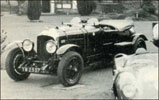 |
|
|
|
| |
 |
| |
|
|
| |
|
|
| |
|
|
| |
Source:
"Thoroughbred & Classic Cars"
magazine, June 1982
Posted: Sep 13, 2008 |
|
| |
|
|
|
|
 |
| Click
on thumbnail for larger view |
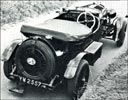 |
|
|
|
| |
 |
| |
Photograph was taken
for program for The Historic Vehicle
Silver Jubilee Tribute Show in Windsor
Park. |
|
| |
|
|
| |
|
|
| |
Source:
The Historic Vehicle Silver Jubilee
Tribute program, May 7-8, 1977.
Posted: Dec 29, 2006 |
|
| |
|
|
|
|
 |
| Click
on thumbnail for larger view |
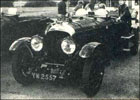 |
|
|
|
| |
 |
| |
W.D.S. Lake's 1928
Le mans 4½ team car |
|
| |
|
|
| |
|
|
| |
Source:
"Classic Car" magazine,
August 1974
Posted:
Jul 21, 2008 |
|
| |
|
|
|
|
 |
| Click
on thumbnail for larger view |
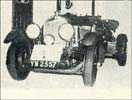 |
|
|
|
| |
 |
| |
|
|
| |
|
|
| |
|
|
| |
Source:
"Motor Sport" magazine, February
1948 issue
Posted: Feb 08, 2007 |
|
| |
|
|
|
|
 |
|
|
 |
 |
| 1929 |
| Click
on thumbnail for larger view |
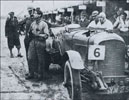 |
|
|
|
| |
|
|
|
 |
| Click
on thumbnail for larger view |
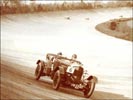 |
|
|
|
| |
 |
| |
1929: In the
first 24 hours race at Brooklands
the 4½ Litre Bentley of S.C.H. Davis
and Sir Ronald Gunter finished second.
The race was run on two consecutive
days to avoid night racing and was
known as the Double Twelve. |
|
| |
|
|
| |
|
|
| |
Source:
"Queste" magazine,
Bentley Special Issue, 1984
Posted: Feb 01, 2007 |
|
| |
|
|
|
|
 |
| Click
on thumbnail for larger view |
 |
|
|
|
| |
 |
| |
Clement and W. O.
Bentley in YW 2557 (No. 2). |
|
| |
|
|
| |
|
|
| |
Source:
Unknown
Posted: Dec 21, 2006 |
|
| |
|
|
|
|

|
|
|
 |
| EARLIEST
RECORD OF HISTORICAL FACTS & INFORMATION |
 |
 |
| |
| Chassis No. |
KM3088 |
| Engine No. |
MF3175 |
| Registration
No. |
YW 2557 |
| Date of Delivery: |
Jun 1928 |
| Type of Body: |
Le Mans Sports |
| Coachbuilder: |
Vanden Plas |
| Type of Car: |
No info  |
| |
|
| First Owner: |
Sir Ronald Gunter,
Bt. |
|
|
| |
|
|
| |
More Info:
According to original Vanden Plas Coachbuilder
records, this car was originally fitted
with Body No. 1480 with a Le Mans Sports/Racer;
Napier Green; finished as per W. O.
Bentley's instructions; 5/1928.
Team car driven by “Bobtail”
Gunter.
Michael Hay, in his book Bentley:
The Vintage Years, 1997, states:
"Vanden Plas body no. 1480. 9/30
D box 7262 fitted. Accident 10/32 -
new f/axle bed fitted. Rebuilt on new
frame after 1928 season." |
|
| |
|
|
| |
|
|
| |
Updated: Jul 05, 2007
Posted: Mar 01, 2007 |
|
| |
|
|
|
|
| |
| |
| |
| Submit
more information on this car |
| |
| |
| |
|
|
| |
| |
| |
 |
| |
| |
|
| |
|
 |
 |
 |
Sep 30, 2020 - Info and photograph received from Simon Hunt for Chassis No. RL3439 |
 |
 |
Sep 30, 2020 - Info and photographs received from Dick Clay for Chassis No. 147 |
 |
 |
Sep 29, 2020 - Info and photographs received from Ernst Jan Krudop for his Chassis No. AX1651 |
 |
 |
Sep 28, 2020 - Info and photographs received from Lars Hedborg
for his Chassis No. KL3590 |
 |
 |
Sep 25, 2020 - Info and photograph added for Registration No. XV 3207 |
 |
 |
Sep 24, 2020 - Info and photograph added for Registration No. YM 7165 |
 |
| [More] |
 |
|
|
|
 |
|
|
 |
 |
 |
|
CLUB TALK
Upcoming Vintage Bentley Events |
 |
|
|
 |
 |
 |
|
|
 |
| |
|